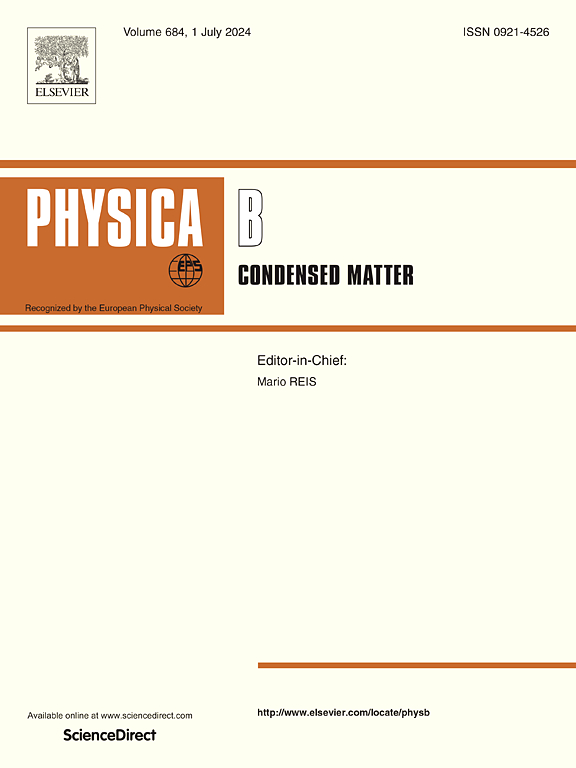Suppression of the Mott insulating phase in the particle-hole asymmetric Hubbard model
IF 2.8
3区 物理与天体物理
Q2 PHYSICS, CONDENSED MATTER
引用次数: 0
Abstract
We explore the phase diagram of the Mott metal–insulator transition (MIT), focusing on the effects of particle-hole asymmetry (PHA) in the single-band Hubbard model. Our dynamical mean-field theory (DMFT) study reveals that the introduction of PHA in the model significantly influences the critical temperature () and interaction strength (), as well as the size of the co-existence region of metallic and insulating phases at low temperatures. Specifically, as the system is moved away from particle-hole symmetry, decreases and increases, indicating a suppression of the insulating phase and the strengthening of the metallic behavior. Additionally, the first-order transition line between metallic and insulating phases is better defined in the model with PHA, leading to a reduced co-existence region at . Moreover, we propose that the MIT can be characterized by the charge density, which serves as a viable alternative to zero-frequency spectral density typically used in DMFT calculations. Our findings provide new insights into the role of particle-hole asymmetry in the qualitative and quantitative characterization of the MIT even in a very simple system.
粒子-空穴不对称Hubbard模型中Mott绝缘相的抑制
我们探索了Mott金属-绝缘体跃迁(MIT)的相图,重点研究了单波段Hubbard模型中粒子-空穴不对称(PHA)的影响。我们的动力学平均场理论(DMFT)研究表明,在模型中引入PHA会显著影响临界温度(Tc)和相互作用强度(Uc),以及低温下金属相和绝缘相共存区域的大小。具体来说,当系统远离粒子-空穴对称时,Tc降低,Uc增加,表明绝缘相受到抑制,金属行为增强。此外,在有PHA的模型中,金属相和绝缘相之间的一阶过渡线被更好地定义,导致在T<;Tc处共存区减小。此外,我们提出MIT可以用电荷密度来表征,这可以作为DMFT计算中通常使用的零频率谱密度的可行替代方案。我们的发现为粒子-空穴不对称在MIT的定性和定量表征中的作用提供了新的见解,即使在一个非常简单的系统中也是如此。
本文章由计算机程序翻译,如有差异,请以英文原文为准。
求助全文
约1分钟内获得全文
求助全文
来源期刊

Physica B-condensed Matter
物理-物理:凝聚态物理
CiteScore
4.90
自引率
7.10%
发文量
703
审稿时长
44 days
期刊介绍:
Physica B: Condensed Matter comprises all condensed matter and material physics that involve theoretical, computational and experimental work.
Papers should contain further developments and a proper discussion on the physics of experimental or theoretical results in one of the following areas:
-Magnetism
-Materials physics
-Nanostructures and nanomaterials
-Optics and optical materials
-Quantum materials
-Semiconductors
-Strongly correlated systems
-Superconductivity
-Surfaces and interfaces
 求助内容:
求助内容: 应助结果提醒方式:
应助结果提醒方式:


